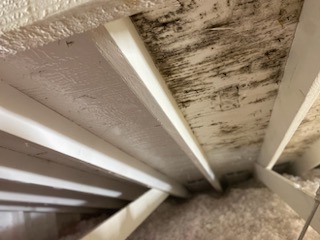Discovering mold in your home can be a stressful experience. This unwelcome growth poses a significant health risk and can cause extensive damage to your home. While it might be tempting to tackle mold removal yourself, a professional mold remediation process is often the safest and most effective solution.
Mold spores are everywhere, and when they find a dark and damp environment, they multiply rapidly. Exposure to mold can lead to various health issues, including respiratory problems, allergies, and even severe health issues in rare cases. Attempting DIY mold removal without proper equipment and expertise can expose you and your family to these harmful spores, potentially making the problem worse and putting your health at risk.
Professional mold remediation involves a systematic approach to ensure complete removal and prevent future growth from occurring. During the process, you can generally expect the following.
Assessment and Containment
To start, a qualified mold remediation technician will conduct a thorough inspection of your property. This assessment is crucial to identify the type of mold present, determine the extent of the infestation, and pinpoint the underlying moisture source that’s fueling the growth. Once the problem is fully understood, they will then establish containment barriers. This typically involves sealing off the affected area using plastic sheeting and creating negative air pressure to prevent mold spores from migrating to other parts of your home during the removal process.
Mold Removal
Equipped with specialized tools and knowledge, professionals will then use HEPA vacuums to safely remove mold from affected surfaces. These high efficiency vacuums trap microscopic mold spores, preventing them from becoming airborne and spreading. Antimicrobial solutions are also used to kill any remaining mold and discourage regrowth. Depending on the severity of the infestation, this may involve removing and disposing of porous materials like drywall, insulation, or carpeting that cannot be effectively cleaned and could harbor hidden mold.
Dehumidification and Drying
After the mold is removed, then it is essential to thoroughly dry the affected areas. Powerful dehumidifiers are strategically placed to eliminate excess moisture and create an inhospitable environment for mold. Moisture meters are used to carefully monitor the drying process and ensure all surfaces and materials are returned to safe moisture levels. This is crucial to prevent future mold problems.
Repairs and Restoration
Once the mold is removed and the area is dry, any necessary repairs and restoration work will be carried out. This might include replacing any damaged drywall, applying fresh paint, and installing new floors or insulation. The goal is to return your home to its pre-mold condition, both structurally and aesthetically.
Timeline Expectations
In terms of how long it takes to complete mold remediation, timelines can vary. Things like size and severity of the infestation, the types of materials affected, and the extent of required repairs all play a role. Smaller projects can be completed within a few days, while larger or more serious cases can take upwards of several weeks to fully address.
Why DIY Removal Can Be Dangerous
Mold remediation is much more than a simple cleaning task. It requires specialized knowledge, equipment, and safety protocols to be carried out effectively and without risk. Improper handling of mold can release a large amount of spores into the air, potentially leading to serious health issues. And without addressing the root cause of the moisture problem, any DIY mold efforts are likely to be temporary, as the mold would simply return.
Professional Expertise
Above Board specializes in mold remediation and can safely and effectively remove mold from your home. Our expert technicians will assess the situation, implement a comprehensive removal plan, and take steps to prevent future mold growth. Don’t let mold take over your home. Contact Above Board today for professional mold remediation services.

